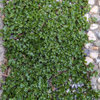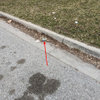What type of soil is need for a Raised Garden Bed
John near Toledo
8 years ago
Related Stories

GARDENING GUIDESGet the Dirt on Your Garden’s Soil
Understand how your soil supports your plants so you can ensure your garden’s success
Full Story
GARDENING GUIDESGrow a Beautiful Garden in Alkaline Soil
Got alkaline soil? Learn how to manage it and the many beautiful plants that will thrive in this ‘sweet’ soil
Full Story
GARDENING GUIDESGardening Solutions for Heavy Clay Soils
What’s a gardener to do with soil that’s easily compacted and has poor drainage? Find out here
Full Story
GARDENING AND LANDSCAPINGBuild a Raised Bed to Elevate Your Garden
A bounty of homegrown vegetables is easier than you think with a DIY raised garden bed to house just the right mix of soils
Full Story
FARM YOUR YARDHow to Get Good Soil for Your Edible Garden
The nutrients in your soil feed the plants that feed you. Here are tips on getting it right — just in time for planting season
Full Story
GARDENING GUIDESGardening Solutions for Dry, Sandy Soils
Has your desert or beachy site withered your gardening creativity? Try these ideas for a beautiful, easy-care landscape
Full Story
GARDENING GUIDES10 Solutions for Soggy Soil
If a too-wet garden is raining on your parade, try these water-loving plants and other ideas for handling all of that H2O
Full Story
GARDENING GUIDESHow to Stop Worrying and Start Loving Clay Soil
Clay has many more benefits than you might imagine
Full Story
GARDENING GUIDESThe Poop Scoop: Enrich Your Soil With Good Old Manure
Get over the ick factor already — this natural super-ingredient for soil has so many benefits, you'll wonder why you ever went chemical
Full Story
GARDENING GUIDES8 Materials for Raised Garden Beds
Get the dirt on classic and new options for raised vegetable and plant beds, to get the most from your year-round garden
Full Story










tsugajunkie z5 SE WI ♱
kimmq
Related Professionals
Montgomeryville Landscape Architects & Landscape Designers · Quincy Landscape Architects & Landscape Designers · Sand Springs Landscape Architects & Landscape Designers · Newcastle Landscape Architects & Landscape Designers · Camp Verde Landscape Contractors · Concord Landscape Contractors · Fort Atkinson Landscape Contractors · Fort Payne Landscape Contractors · Little Ferry Landscape Contractors · Midland Landscape Contractors · Ponte Vedra Beach Landscape Contractors · Ridgewood Landscape Contractors · Uxbridge Landscape Contractors · Vermilion Landscape Contractors · Waterford Landscape Contractorsgardengal48 (PNW Z8/9)
ken_adrian Adrian MI cold Z5
John near ToledoOriginal Author
ken_adrian Adrian MI cold Z5
John near ToledoOriginal Author
ken_adrian Adrian MI cold Z5
ken_adrian Adrian MI cold Z5